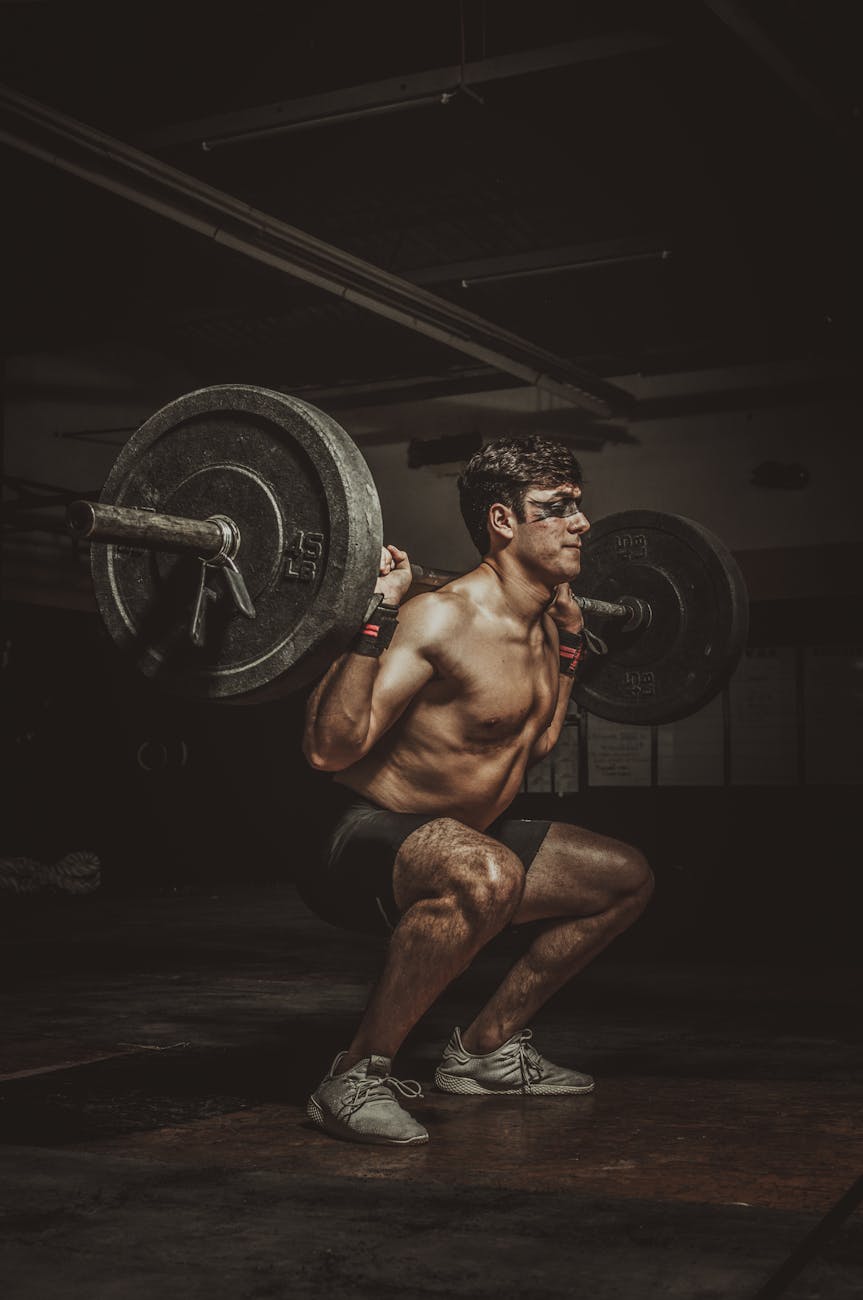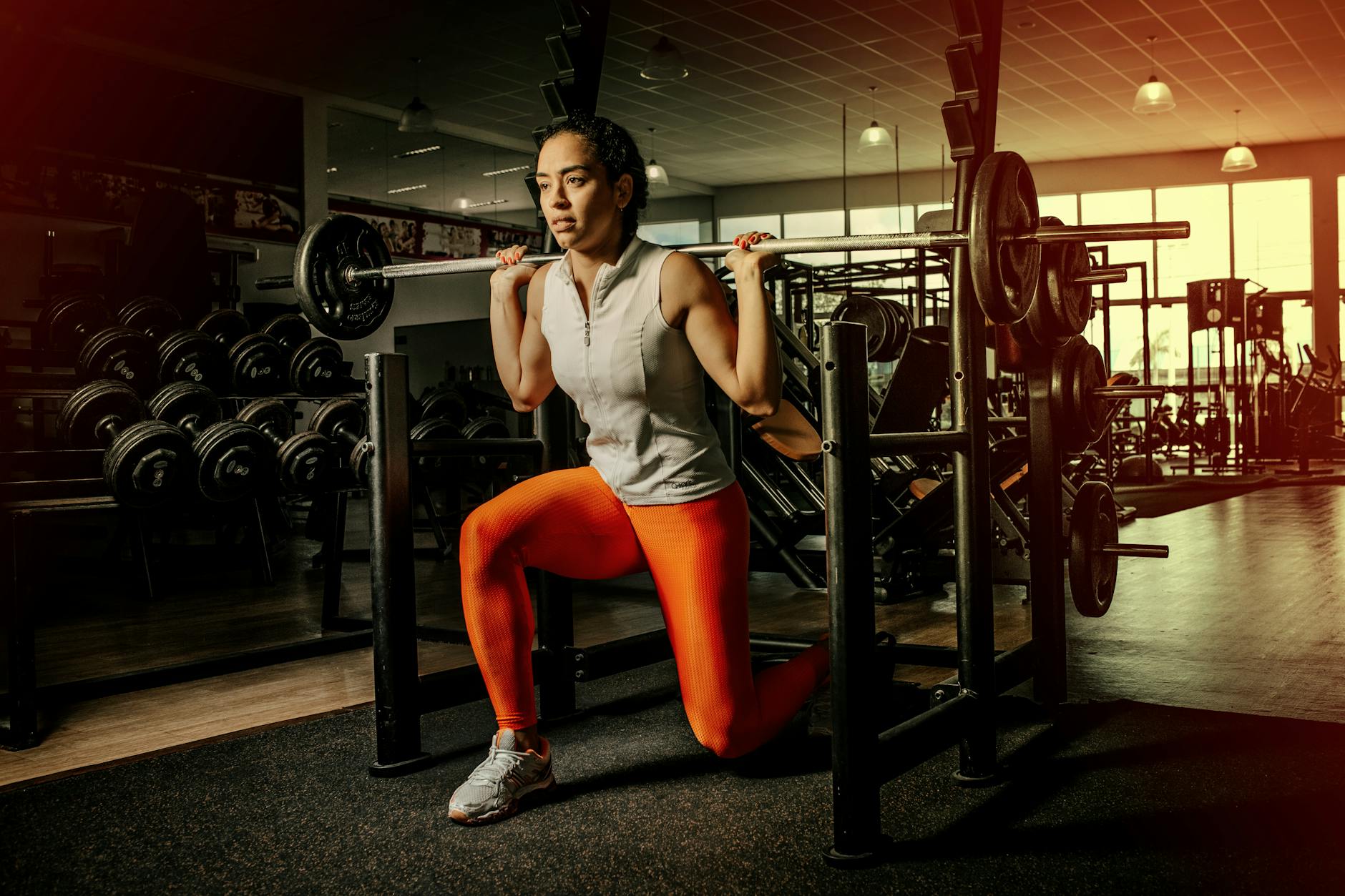Read more here:https://amzn.to/3M9zhhP
(We are an Amazon Affiliate)
Sculpt Your Strength with These Squat Variations
Introduction to the Power of Squats in Bodybuilding
If you’re a bodybuilder, strength trainer, or fitness enthusiast looking to pack on muscle and boost your lifts, squats should be your go-to exercise. Often dubbed as the “king of exercises,” squats are a fundamental movement in any serious strength training program. They’re not just about building powerful legs; they engage multiple muscle groups, enhance stability, and fortify your core. Whether you’re stepping into the gym for the first time or you’re an experienced lifter, understanding the role of squats can elevate your training game.
Squats aren’t merely about aesthetics or increasing the size of your quads. They promote functional strength, improve athletic performance, and contribute to overall body balance. Plus, incorporating squats into your routine can help prevent injuries by strengthening your lower body. From boosting your metabolism to increasing your growth hormone levels, the benefits are endless.
In this guide, we’ll explore the top three squat variations that have become staples in bodybuilding and strength training routines. We’ll discuss how they target different muscle groups, their unique benefits, and how you can incorporate them into your workout regimen for optimum results. Let’s get started!
Overview of the Top 3 Squat Variations
When it comes to squats, variety is not just the spice of life—it’s the secret sauce for maximizing gains. While there are numerous squat variations, three stand out in the world of bodybuilding and strength training: the Back Squat, Front Squat, and Overhead Squat. Each variation brings its unique set of strengths to the table and challenges different aspects of your physique and fitness.
The Back Squat is the most popular and widely practiced squat variation. It’s known for its ability to build massive leg strength and overall muscle mass. The Front Squat shifts focus slightly, putting more emphasis on the quads and core, making it an excellent choice for those looking to enhance their clean and jerk performance. Lastly, the Overhead Squat, a staple in Olympic lifting and CrossFit, tests your balance, mobility, and full-body coordination.
Understanding these variations and how they fit into your routine is crucial for building a comprehensive, effective training plan. Let’s take a closer look at each one, dissecting their form, benefits, and the specific muscle groups they target.
Get your set of Olympic weights here:https://amzn.to/3M1Eecz
Mastering the Back Squat
The Back Squat is often hailed as the ultimate test of lower body strength. According to John Doe, a Certified Strength and Conditioning Specialist, “The back squat is the king of all exercises, not just for the legs, but for total body development. It’s a cornerstone of strength training and should be in every serious bodybuilder’s program.”
Form is key when performing back squats. Start by resting the barbell comfortably on your upper traps, just below your neck. Keep your feet shoulder-width apart, toes slightly pointed out. Initiate the movement by pushing your hips back and bending your knees, lowering your body until your thighs are parallel to the ground. Push through your heels to return to the starting position.
Back squats primarily target the quadriceps, hamstrings, glutes, and lower back. They also engage the core for stabilization. The benefits extend beyond hypertrophy; they improve balance, increase flexibility, and enhance power output in other lifts.

Unlocking the Potential of Front Squats
Front Squats are a favorite among Olympic lifters and those seeking a robust core. Jane Smith, a Personal Trainer and Bodybuilding Competitor, notes, “Front squats are a game-changer for those looking to build a strong core and improve their Olympic lifts. They’re not just a leg exercise but a full-body workout that can enhance your posture and overall strength.”
Performing a front squat requires placing the barbell across the front of your shoulders, with your elbows high and forward. Keep your chest upright and your core engaged throughout the movement. Descend into a squat, ensuring your elbows remain above your knees, then drive through your heels to stand back up.
This variation shifts the focus to the quads and core, demanding more upper body strength and flexibility. It’s an excellent exercise for improving posture, balance, and front rack mobility, essential for Olympic weightlifting.
Conquering the Overhead Squat Challenge
The Overhead Squat is the ultimate test of your mobility, stability, and coordination. Alex Johnson, a Fitness Coach and CrossFit Athlete, asserts, “Overhead squats are the ultimate test of mobility, stability, and strength. They’re an excellent movement for improving flexibility and balance, and they activate muscles that are often overlooked in traditional squat variations.”
To perform an overhead squat, hold the barbell overhead with a wide grip, arms fully extended. Keep your feet shoulder-width apart and descend into a squat while maintaining the barbell directly above your head. Ensure your core is braced and your back is straight throughout the movement.
This squat variation engages the shoulders, core, and lower body, demanding superior flexibility and balance. It’s ideal for athletes looking to enhance their performance in overhead lifts and improve their overall functional fitness.
You will need squat stands:https://amzn.to/4dijIjT

Incorporating Squats into Your Routine
Integrating these squat variations into your workout routine can yield impressive results. Start by assessing your current fitness level and goals, then choose one or more variations to focus on. Rotate between them to keep your workouts fresh and challenging.
Beginners may start with back squats, gradually progressing to front and overhead squats as they develop strength and confidence. Aim to incorporate squats into your routine two to three times per week, allowing adequate recovery between sessions.
It’s crucial to complement squats with exercises targeting other muscle groups to maintain balance and prevent overtraining. Incorporate mobility drills and dynamic stretching to enhance flexibility and reduce the risk of injury.
Power Racks for the Ultimate Safety:https://amzn.to/3ApKuZm
Real-Life Success Stories
Real-world success stories highlight the impact of these squat variations. John, a dedicated bodybuilder, focused on back squats for six months, increasing his one-rep max from 300lbs to 350lbs. This progress led to noticeable improvements in his leg and back muscle mass, showcasing the power of consistent training.
Sarah, a strength trainer, integrated front squats into her routine for three months. The result? Enhanced core strength and a 15% increase in her clean and jerk weight, significantly improving her Olympic lifting performance.
Alex, a fitness enthusiast, added overhead squats to his CrossFit regimen for four months. He experienced remarkable improvements in shoulder and hip flexibility, along with better balance, boosting his performance in functional fitness movements.
Common Squat Mistakes to Avoid
Avoiding common mistakes is essential for maximizing gains and preventing injuries. One common error is allowing the knees to cave inward during the squat. Focus on pushing your knees outward and keeping your feet firmly planted to maintain proper alignment.
Another mistake is rounding the lower back, which places unnecessary strain on the spine. Engage your core and maintain a neutral spine throughout the movement to protect your back and enhance power transfer.
Finally, avoid bouncing at the bottom of the squat. Instead, control your descent and ascent, focusing on maintaining tension in your muscles for optimal results.
Conclusion
Incorporating a variety of squat variations into your training regimen is a game-changer for bodybuilders, strength trainers, and fitness enthusiasts alike. The back squat builds foundational strength, the front squat enhances core stability, and the overhead squat challenges your mobility and coordination.
By understanding the form, benefits, and targeted muscle groups of each squat variation, you can tailor your workouts to achieve your specific goals. Remember to avoid common mistakes and gradually progress as you become more confident in your abilities.
Experiment with these squat variations and discover the positive impact they can have on your strength and overall fitness. Whether you’re aiming to break personal records or simply enhance your training routine, these exercises will undoubtedly elevate your performance and help you reach new heights.
Get your Kettlebells right here:https://amzn.to/3yrkHzj

